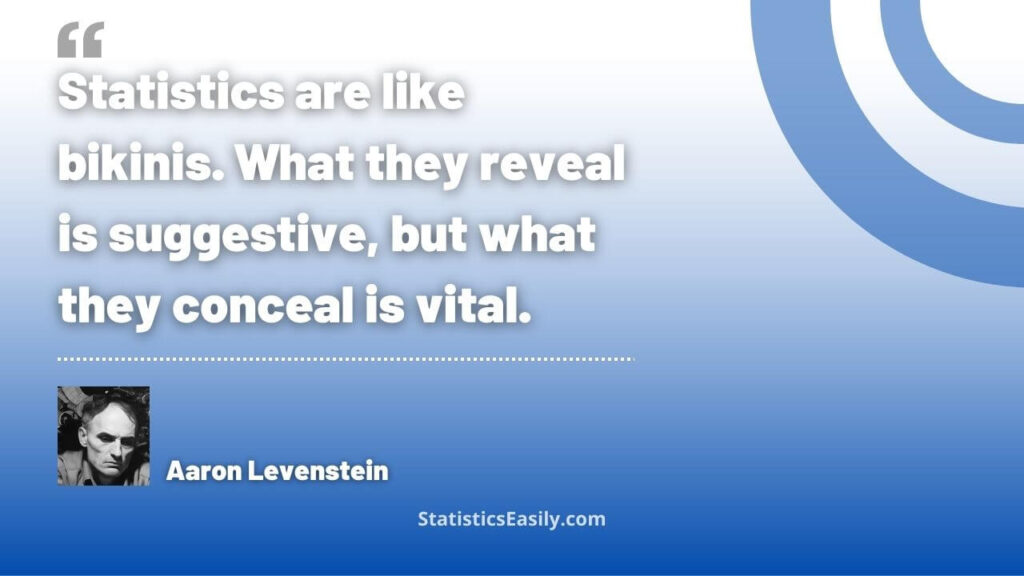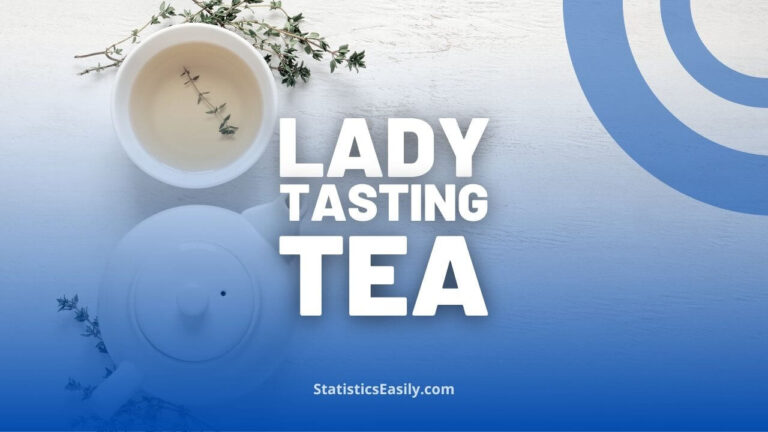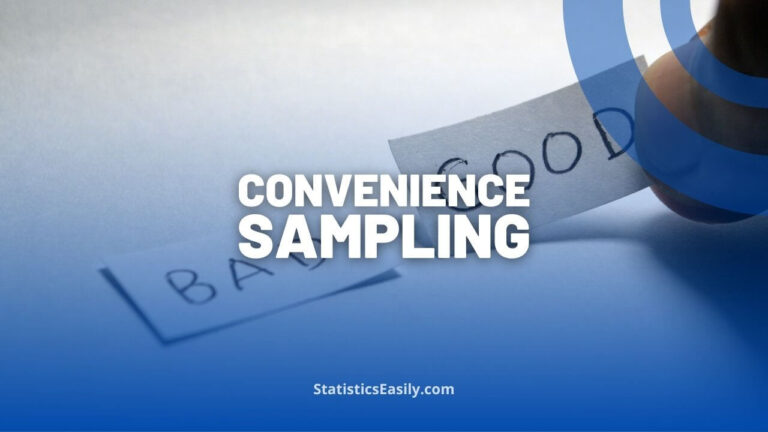Understanding Data: Why ‘Statistics Are Like Bikinis’
The phrase “Statistics are like bikinis” suggests that while statistics reveal specific data insights, they also conceal crucial aspects, much like a bikini shows some parts but hides others. Thus, while they provide valuable summaries, statistics may only partially represent the complexity of the underlying data.
The Statement: “Statistics Are Like Bikinis“
“Statistics are like bikinis” is a provocative analogy coined by Aaron Levenstein. Like a bikini, statistics simultaneously reveal and conceal, providing a peek into reality but not divulging everything. The phrase is more than a humorous quote; it encapsulates an essential truth about the role of statistics in data analysis and interpretation.
Statistics offer a method to make sense of raw data, providing a summary or a snapshot that’s much easier to understand than a series of raw numbers. On the other hand, they can be manipulated to serve various agendas and, in doing so, can obscure the whole truth or the bigger picture. This can lead to misinterpretations and even misconceptions about the underlying data.
The core concept behind the phrase “statistics are like bikinis” is that while statistics are an invaluable tool for interpreting data, one should always be aware that they are only a representation of reality, not the reality itself. They give insights, but one should remember that some vital information might not be included in the statistical summary.

Highlights
- “Statistics are like bikinis” suggests statistics reveal insights but also hide crucial aspects.
- Statistics simplify complex data, providing easily digestible summaries and insights.
- Despite revealing patterns, statistics might only partially represent the causal relationship.
- Concealed data is the untold story, variables not considered, and context not provided.
- Misinterpreted data can propagate misinformation and lead to flawed decisions.
Ad Title
Ad description. Lorem ipsum dolor sit amet, consectetur adipiscing elit.
What Statistics Reveal: The Visible Side of Data
Statistics reveal trends, correlations, and data summaries that would be nearly impossible to understand otherwise. The visible side of data, like the part of a bikini that is shown, can be beautiful and valuable. We can use statistical measures to identify patterns in the data, such as the average, median, mode, range, and standard deviation.
These measures can help us understand complex phenomena by boiling them down to simpler terms. For example, statistics are used in scientific research to reveal patterns and correlations that may not be immediately apparent from raw data. They provide a method for testing hypotheses and drawing conclusions.
However, it’s crucial to remember that the revealed part is not everything. While the trends and patterns can lead to important insights, they might only show part of the picture or explain the causal relationship. This brings us to the concealed side of data.
What Statistics Conceal: The Hidden Side of Data
Statistics, like bikinis, often hide important information that is just as meaningful, if not more so, than what they actually show. Statistics can hide anomalies, obscure data diversity, and sometimes even mislead. A single statistic can gloss over nuances and complexities within the data. The concealed data is the untold story, the variables not considered, the context not provided, and the questions left unanswered.
When interpreting statistics, we must ask ourselves what has been left out. For example, an average may not reveal the data distribution; a correlation might not imply causation. Also, statistics can be manipulated intentionally to mislead or create a more appealing narrative. This is why statistical literacy is crucial for data interpretation.
Data can be noisy, messy, and complex. In an effort to simplify this complexity, statistics may unintentionally or intentionally ignore essential aspects of the data. Whether deliberate or not, concealment can lead to incorrect interpretations and conclusions.
The Risks and Rewards of Data Interpretation
Interpreting data has both risks and rewards. The reward is gaining insights that can lead to better decision-making, technological advancements, policy changes, and numerous other benefits. Statistics enable us to convert raw, confusing data into understandable information, opening a world of insights and evidence-based decision-making.
However, there is a potential risk of misinterpretation. Misinterpreted data can lead to flawed decisions, propagate misinformation, and even damage reputations. Data misinterpretation can result from confirmation bias, overgeneralization, ignoring the context, or failing to consider the concealed data.
Recognizing these risks is essential for more accurate and effective data interpretation. By being aware of the potential pitfalls, one can take measures to avoid them and increase the reliability of their interpretations.
Ad Title
Ad description. Lorem ipsum dolor sit amet, consectetur adipiscing elit.
A Balanced Approach to Interpreting Statistics
Interpreting statistics requires a balanced approach that acknowledges both the revealing and concealing nature of statistics. One must understand that while statistics simplify complex data and provide valuable insights, they only sometimes present the whole truth.
A balanced approach involves critical thinking and skepticism. It means not taking statistical measures at face value but probing deeper, questioning the methodology, considering the context, and looking for what might have been left out. It also involves understanding the statistics’ limitations and considering alternative or additional measures that provide a more comprehensive view of the data.
In conclusion, just as bikinis suggest more than they show, statistics hint at a far more complex reality than they can completely describe. Therefore, while using statistics for data interpretation, one must keep the hidden aspects of data in mind, ensuring a balanced and accurate understanding.
Recommended Articles
Delve deeper into the world of statistics and data interpretation with our other insightful articles. Expand your knowledge by visiting our blog!
- How To Lie With Statistics?
- Statistics And Fake News: A Deeper Look
- Statistics is the grammar of science (Story)
- Common Mistakes in One-Way ANOVA (Story)
- The use and misuse of statistical methodologies
- Scatterplot Mastery: Unveiling Patterns in Data Visualization
- What’s Regression Analysis? A Comprehensive Guide for Beginners
- Descriptive Statistics and Inferential Statistics: Simplifying Data Analysis
Frequently Asked Questions (FAQs)
Statistics reveal specific insights but also hide crucial aspects.
Statistics reveal trends, correlations, and summaries of data, helping understand complex phenomena.
Statistics can hide anomalies, data diversity, and nuances within the data.
Risks include the potential for misinterpretation, leading to flawed decisions and misinformation propagation.
Statistics can mislead through confirmation bias, overgeneralization, or ignoring the context.
It involves critical thinking, questioning the methodology, considering the context, and recognizing statistics’ limitations.
By probing deeper into the methodology, considering context, and looking for what might have been left out.
Understanding what is being revealed and concealed is essential to ensuring accurate interpretations.
Rewards include gaining insights for better decision-making, technological advancements, and policy changes.
Considering concealed data helps understand the hidden aspects of data, ensuring a more comprehensive view.








